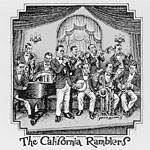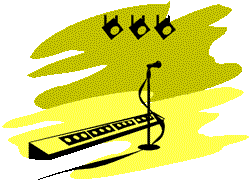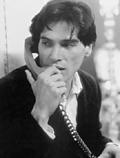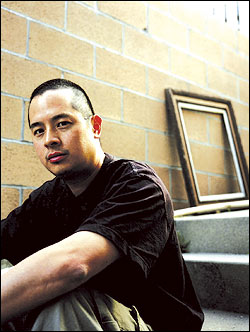IN 1952, SMITHSONIAN Folkways released Anthology of American Folk Music, compiled by Harry Smith. It’s famous for redefining American folksong by including commercial pop and blues, Cajun fiddle stomps, and children’s songs alongside traditional ballads and protest numbers. Smith saw American music as a unified entity: He cherry-picked and rigorously sequenced 84 songs, recorded between 1926 and 1934 and littered with bad men and disaster, into a highly idiosyncratic vision of what critic Greil Marcus dubbed “the old, weird America.”
Various Artists
Sony Music 100 Years: Pop Music: The Early Years 1890-1950 (Columbia/Epic Legacy)
Various Artists
That’s What I Call Sweet Music: American Dance Orchestras of the 1920s (EMI Songbook Series import)
The Anthology created, almost single-handedly, the musical foundation of the ’60s folk revival in America, many of whose exponents (Bob Dylan, Roger McGuinn, Jerry Garcia) in turn emigrated into the rock realm. When Smith’s Anthology resurfaced in fall of 1997, the anticipation for it was so great that several New York shops literally couldn’t keep it on their shelves. But the hype was so intense that when, the following summer, a far larger, even more ambitious multidisc undertaking was issued, almost nobody noticed.
American Pop: An Audio History, on West Hill Audio Archives, attempts nothing less than, as compiler/annotator Allen Lowe writes in the liner notes, “an overview of American popular song as it sounded to people who bought and listened to records” from 1893-1946. Though the box misses genres (Village Voice critic Gary Giddins cited its dearth of Broadway and movie musical numbers, Irish tenors, comedy records, Latin bands, and dance bands), in strictly aesthetic terms Lowe succeeds brilliantly.
Sure, the nine-disc, 11-hour set doesn’t match Smith’s as a sit-down-and-listen-from-beginning-to-end album, but that’s hardly the point. If American Pop is seemingly endless, it’s also endlessly fascinating: The music segues from Sonny Boy Williamson into Count Basie into Gene Autry into Duke Ellington on one disc, all in the name of “pop.” If the Folkways Anthology has something of the contours of myth, Lowe, with his near-absolute catholic taste, eschews myth altogether. His intention isn’t to piece together an idea of the “old, weird America,” but to reconstruct the old, normal America—or maybe the old, expectant America, the country that groped toward the future instead of clinging to the past, as Smith’s selections do.
IN THIS LIGHT, two recent compilations of pre-World War II music serve to make Lowe’s expansive vision even more accessible. Both Pop Music: The Early Years 1890-1950 and That‘s What I Call Sweet Music: American Dance Orchestras of the 1920s flesh out Lowe’s gargantuan opus, both sonically (even more good records!) and historically. Best of all, they take relatively little effort for modern ears to appreciate.
It’s easy to see why the dance bands celebrated on That‘s What I Call Sweet Music were left out of Lowe’s aggressively modernist thesis. All of Sweet Music‘s selections were recorded between 1927 and 1930, when the ’20s were still Roaring and the Depression had yet to hit. But they sound much more dated than other songs of the time, in no small part because, as compiler Robert Crumb notes, they sound like background music from Laurel and Hardy comedies. (And yes, it’s that Robert Crumb, the underground cartoonist, who is a noted collector of 78 RPM records). Get past that, though, and your reward is 24 remarkably buoyant, highly syncopated songs whose charming silliness is hard to resist: Try Gus Arnheim and His Orchestra’s snazzy instrumental version of “Singin’ in the Rain” or Paul Sprecht and His Orchestra’s “That’s What I Call Sweet Music,” whose unknown trio vocals are pure creamy vanilla, something that applies throughout. Crumb’s involvement is visual, too: Sweet Music is part of British EMI’s Songbook Series, for which a number of illustrators have designed elaborate CD packages to house compilation albums that they themselves culled from the EMI vaults. (Other artists in the series include Ralph Steadman, Peter Bagge, and Clive Barker.)
Pop Music: The Early Years, meanwhile, is a double-CD cut from the same cloth as Lowe’s collection and can be thought of as either an American Pop distillation or addendum—amazingly, there’s no overlap between them. But The Early Years is less a quasi-sequel to Lowe’s box than, magnitude aside, nearly its equal. The collection is part of the Sony Music 100 Years: Soundtrack for a Century series, and as a result it slights, to one degree or other, genres that receive their own volumes, including jazz, R&B, movie music, Broadway, and a catchall folk/blues/gospel set. But it makes up for those oversights by including several key records Lowe’s survey somehow missed. The California Ramblers’ “The Peanut Vendor” introduced Latin American rhythmic ideas into the US; “Brother, Can You Spare a Dime?” by Bing Crosby, who does appear twice on American Pop, remains the definitive Depression snapshot; Raymond Scott’s “The Toy Trumpet” wound up being appropriated by Bugs Bunny and postmodernist jazz musicians alike.
Most of the rest of The Early Years is just as good, with song after song sending you back to the package for more info: the Golden Gate Quartet’s jaw-dropping a cappella gospel war story “Comin’ in on a Wing and a Prayer,” Gene Greene’s demented 1911 “King of the Bungaloos” (the last third of which is essentially an extended, exuberant scat, predating Louis Armstrong’s initial forays into that terrain by 15 years), Cab Calloway’s droll sequel to his greatest hit, “Minnie the Moocher’s Wedding Day.” Granted, Sony’s compilers are schlockier than Lowe, who left the unctuous “Laura,” by Ray Noble and His Orchestra (featuring Buddy Clark), off his compilation for a reason. But most of the time, this version of the old, normal America is extraordinary indeed.








